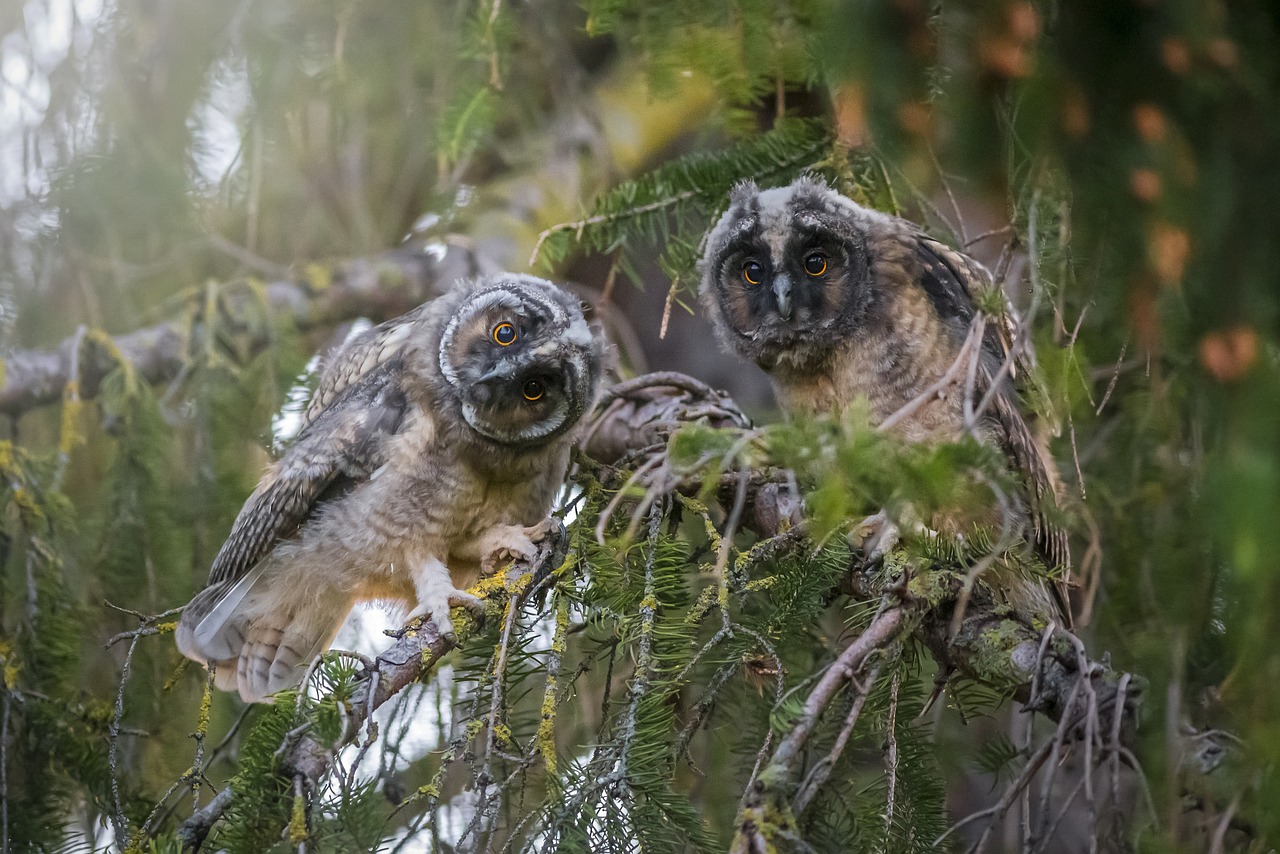🦉 Long-eared Owl (Asio otus)
Taxonomy
- Order: Strigiformes
- Family: Strigidae
- Genus: Asio
- Species: A. otus
🔍 Identification
The Long-eared Owl is a medium-sized, slim, and very well-camouflaged nocturnal owl.
Key features:
- Long, dark ear tufts that point upward — raised mainly when alert or displaying
- Bright orange eyes and a narrow black facial border giving a distinctive stare
- Cryptic brown-buff plumage with streaking that blends into woodland cover
- Silent, buoyant flight reminiscent of a large moth
Size:
- Length: 31–40 cm
- Wingspan: 86–100 cm
- Weight: 200–350 g
Often confused with:
- Short-eared Owl (Asio flammeus) → yellow eyes, habits open fields, ear tufts rarely visible
- Tawny Owl → bulkier, dark eyes, lacks long ear tufts
📍 Distribution & Habitat
Range: Widespread across Europe, Asia, North America, and parts of North Africa.
Prefers mixed environments:
- Coniferous and mixed woodlands for roosting
- Adjacent open fields, meadows, or marshes for hunting
Winter roosts:
Multiple individuals may gather in dense hedges or evergreens — sometimes 20+ owls in one communal roost!
🍽️ Diet & Hunting
A strictly nocturnal predator relying on:
- Small mammals (especially voles and mice)
- Occasionally small birds, bats, insects
Hunts by perch-and-pounce, using exceptional hearing and silent flight to locate prey in complete darkness.
Coughs up oval pellets full of bones and fur, often found below roosting sites.
🧬 Behavior & Ecology
- Territorial during breeding season, but more social outside it
- Uses abandoned crow, magpie, or squirrel nests — does not build its own
- Nesting well hidden in dense vegetation
Acoustic note:
Male call is a soft, rhythmic “hoo … hoo … hoo”, spaced several seconds apart and audible over long distances.
🐣 Life Cycle
- Breeding: March–June
- Clutch: 3–7 eggs
- Incubation: ~27 days (female only)
- Chicks fledge at ~3–4 weeks, but remain dependent for several weeks more
- Lifespan: up to 25+ years (shorter in the wild)
🎯 Special Adaptations
- Ear tufts are visual signals — not used for hearing
- Asymmetrical ear openings for pinpoint sound localization
- Feather fringes for ultra-silent flight
- Camouflage posture (elongated body, tufts raised) mimics a broken branch
🌍 Conservation Status
- IUCN: Least Concern
- Declining regionally due to:
- Agricultural intensification reducing rodent prey
- Loss of hedgerows and roosting cover
- Collisions with vehicles and fences
Supports ecosystems by regulating rodent populations.
🧾 Key Facts Summary
| Feature | Detail |
|---|---|
| Wingspan | 86–100 cm |
| Eyes | Bright orange |
| Habitat | Woodland edges + open fields |
| Nesting | Old corvid/squirrel nests |
| Social behavior | Communal winter roosts |
| Status | Least Concern, some regional declines |
Views: 1472
Subscribe to the newsletter:
